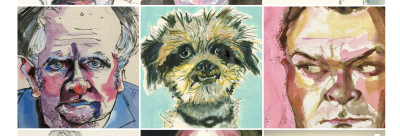
When you post on Instagram your images shuffle over and your whole grid of images, all the way back to your first post shuffle over. Rows change contents.
I know there are folks who really plan the organization of their posts so that there is some type of cohesive whole going on. But since my interests are diverse I’m simply posting what I’ve been drawing lately, what I am baking, what I was drawing in the past but I just found in my archive that was never posted on Instagram because I’m a late adopter…
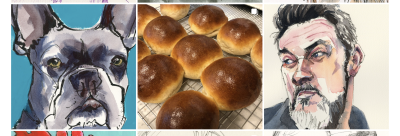
But Thursday when I posted and the images shifted, I noticed a couple lines were organizing in a fun way. I did a series of screen captures because it will be a couple more postings before these individual sets appear again, and I thought it was too funny not to document.
Sometimes favorite images align in one row. All of these (the three immediately above) are amongst my favorite portraits of last year. Nathan in the billed cap on the right is perhaps my favorite painting of 2023. And the center portrait sits in the hall as I come out of my studio and it just makes me happy to see that face staring at me in recognition as I come and go.
Recognition, that’s another thing that interests me about these line ups. And it’s another reason I paint portraits. I’m recognizing something in every portrait I paint.
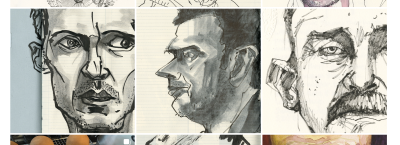
I always think I’m being very obvious in my portraits, giving little bits of myself away. Not showing people that I like beards—that’s been a known fact since, I don’t know—since Errol Flynn in “The Adventures of Robin Hood,” or Errol Flynn in “Kim” as Mahbub Ali. I was just a kid watching reruns of old movies on Australian TV, and I thought, “Everyone should leap and bounce around and be as spry as Flynn. Everyone should be having as much fun as Flynn.”
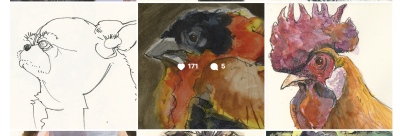
Flynn is actually very bird like. So it makes sense I was drawn to him and his beard(s). And that I also do lots of portraits of birds.
I think some people think that as a female artist drawing men with beards there is some sexual component attached to all these paintings of beards.
Couldn’t be more wrong—I feel sisterly towards the men I paint. My brother had a beard, as soon as he could grow one (and still does). It just seemed right on his face. But more importantly it is a texture and as an artist I love textures. Just after high school my dad gave me a “real” camera (something younger folks with their phones and digital cameras won’t even recognize as a thing). I learned to develop my own film and make my own prints. I have hundreds of photos I took of my brother with his beard because he was my brother and because we were apart (because of college), and because I grew up being his sidekick and missed him, but also because he was an available (during visits) model. He likes to talk and talk (more even than I do, if my students can believe it!) and it was easy to get the different angles on his face and all that fun light on the hair. He was the perfect model. (Our mother had spent years taking photos and Super8 video of us on trips so it seemed natural to have a camera pointed at us. And then for me to do the pointing.)
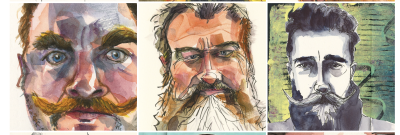
Also hair and facial hair are structural. People take a lot of time in the morning to “present” themselves to the world. (Or don’t take any time and that’s presentation by default.) Hair is a huge part of that presentation. I think we need to celebrate it. And the resultant pictures also tell us something about the times we’re living in. (Several years ago [2015?] I wrote about beards being “in style” and we’d better hurry up and enjoy sketching men with beards before we entered another “clean-shaven” period. So far there are enough beard hold outs that I have plenty to draw!)
I believe that details like beards tell us something about the person. They also tell us something about the artist. Someone who looked into my background would know that I studied Victorian Literature. So many bearded men in the 19th century. It seems normal to me. And men, especially 19th century men, had a lot of fun arranging their facial hair. (Do your own research, creativity abounds.) I think we need to celebrate that type of creativity.
And that tells you something about me.
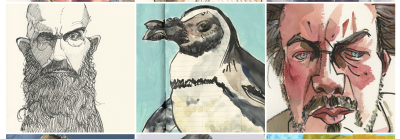
There are millions of artists alive today (I’m not going to even start counting past generations), all busy capturing female beauty (or their understanding of it) in anything from a realistic to a stylized way. I wish them all joy. People say to me that these artists are putting something beautiful out in to the world. OK.
But I’m going to keep looking at volume/shadow/structure of hair (and feathers and fur) wherever I find it. It’s just so much fun to draw and see if you can pull it off.
While some of the men I draw may be considered beautiful by the viewer, most will seem to be slightly odd, to have some quirk or characteristic that isn’t in the “beauty” realm. That is a matter of interest to me. Young, beautiful women don’t interest me. If they are living for their beauty I’m a little worried for them and would like to recommend a reading list for them. They are also self-conscious about their looks in a way many man aren’t (and don’t have to be because of our culture, I know). But the study of that lack of self consciousness is instructive—about individuals, about the artist’s interests and views, and about society.
The most beautiful faces I’ve ever seen have been elderly women—and I simply don’t have the skill to paint those and do the radiance justice. Their faces, like men, aren’t wasting time on being self-conscious, but instead, they are just spending time inhabiting their skin, as themselves. How refreshing.
Portraits can be totally subversive, all the while seemingly asking you nothing more than to look at the pretty colors and check whether the eyes have that “Errol Flynn Glint.”
There are millions of reasons to draw a face. If you are going to spend the time you want to find something in a face to invest time in. This is going to be different for every artist. The truth is to find something that grabs you and makes you interested in humanity, in all its forms and shapes, and then get that with all its emotional components down on the page. To me, that’s a thing of beauty even if it’s only in a rough, fleeting sketch. And that truth is also subversive.
I have a lot of students who express fear and loathing about drawing portraits, especially people out in public. There is a reticence to intrude and to see too much. And there is a reticence to be seen.
I think as artists we have to intrude. We are wired to always be looking. We can’t look away. It doesn’t occur to us to look away. But we have to understand that we are going to be seen and judged. That’s OK. Your interests will propel you to study and yield insights.
And I just have to say there really is nothing so fun as finishing a painting on the easel and dancing “Flynn-like” about the room seeing the eyes follow you everywhere.
There is so much joy in portrait painting I don’t know why everyone doesn’t do it all the time. (OK, of course I know; I’ve just been explaining it to you.)
Go for it.



















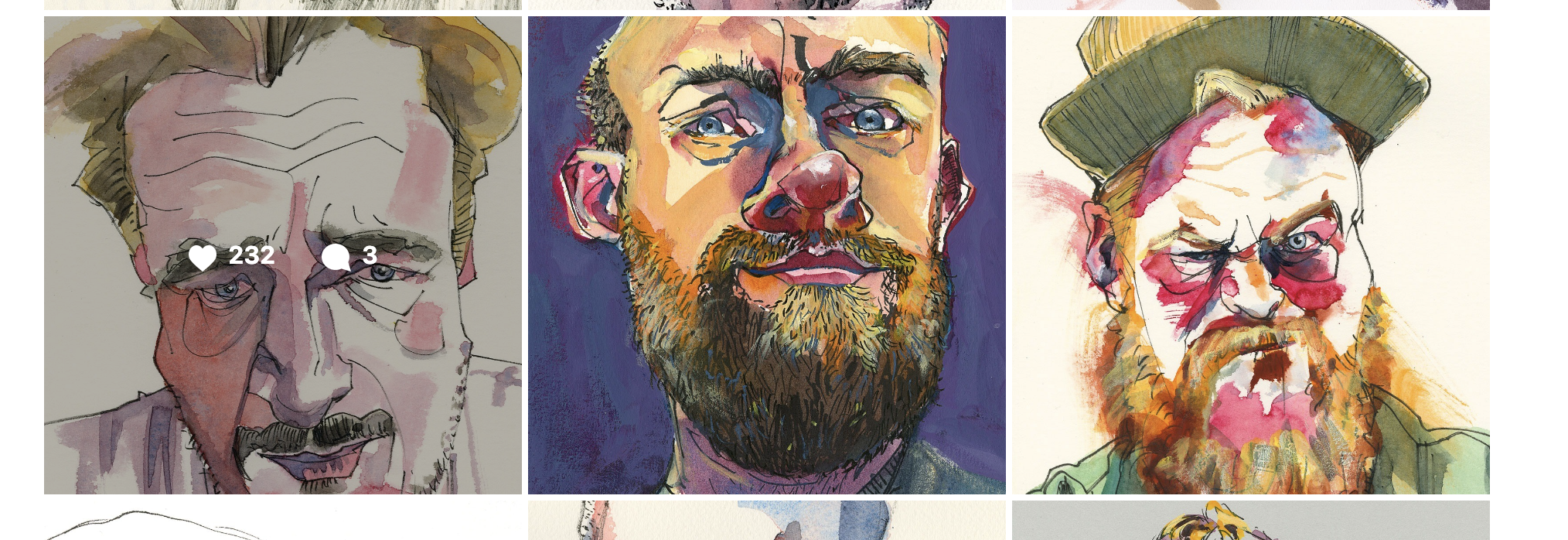
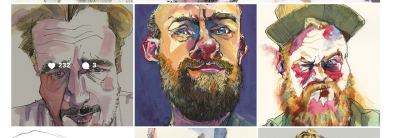
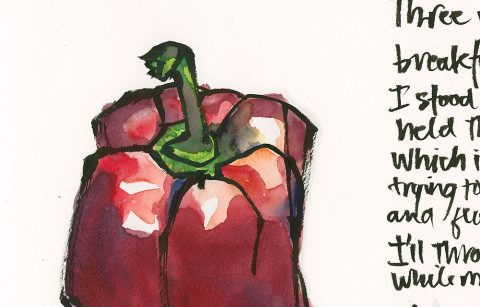
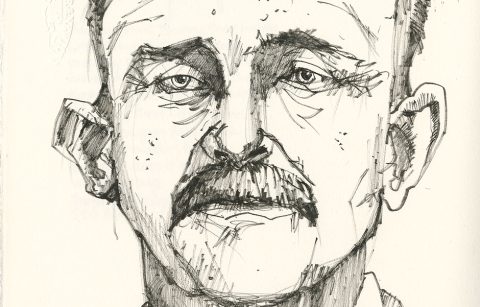
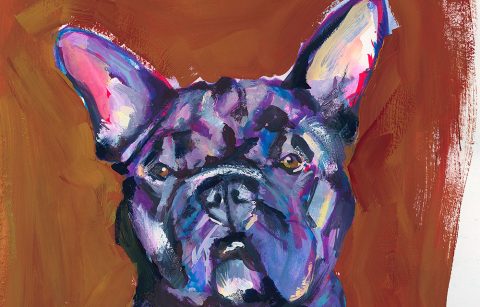
I so understand Roz, my enjoyment of the character face portrait knows no bounds. It is my joy to give myself over to the rush of a PPBP and goauche and crack out a fun face.
I very much feel my Insta feed is a dog’s breakfast because of my diverse pratcie and interests. Folk say you should curate a ‘look’ that is cohesive and screams your ‘product’ but I can’t imagine myself ever being that way, so it continues to be an mesh of different imagery, like it or not.
I like how you see the shuffled tiles making new connections…great to capture that before the algorithm changes again.
I’m so glad you get it Deb. I think Instagram is more interesting when people have a “mesh of different imagery” as you write. You get to see more of the person and I know that matters more to both of us. On we go!